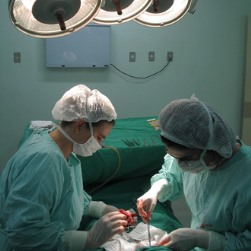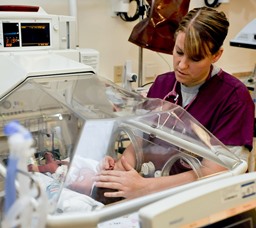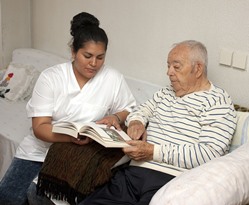How to Enroll In a Nursing College near Tea South Dakota
 Searching for the best nursing program near Tea SD may seem like a difficult project, particularly if you don’t know what to search for in a good degree program. As you may presently know, in order to practice as a registered nurse, you must acquire the proper education and training in order to become licensed. So it is critically important that you study and evaluate the qualifications of each college you are considering before enrolling in your final selection. The fact is, too many future students base their determination entirely on the price of tuition and the proximity of the school. Selecting the least costly school or the one that is nearest to your residence is most likely not the best way to decide on a nursing program. There are a number of important additional considerations to investigate before you determine where to enroll in classes. But before we explore that checklist, let’s first review what the function of a registered nurse is in our health system, as well as the nursing degree options that are available.
Searching for the best nursing program near Tea SD may seem like a difficult project, particularly if you don’t know what to search for in a good degree program. As you may presently know, in order to practice as a registered nurse, you must acquire the proper education and training in order to become licensed. So it is critically important that you study and evaluate the qualifications of each college you are considering before enrolling in your final selection. The fact is, too many future students base their determination entirely on the price of tuition and the proximity of the school. Selecting the least costly school or the one that is nearest to your residence is most likely not the best way to decide on a nursing program. There are a number of important additional considerations to investigate before you determine where to enroll in classes. But before we explore that checklist, let’s first review what the function of a registered nurse is in our health system, as well as the nursing degree options that are available.
Registered Nurse Job Responsibilities
 Registered nurses are the most significant occupation in the medical delivery system. RNs practice in many different medical environments, namely Tea SD hospitals, private practices, outpatient clinics, nursing homes and even schools. Their basic duty is to help doctors in the treatment of their patients. Having said that, the particular duties of a registered nurse will be dependent on their job or specialization in addition to where they work. Some of the responsibilities of an RN may include:
Registered nurses are the most significant occupation in the medical delivery system. RNs practice in many different medical environments, namely Tea SD hospitals, private practices, outpatient clinics, nursing homes and even schools. Their basic duty is to help doctors in the treatment of their patients. Having said that, the particular duties of a registered nurse will be dependent on their job or specialization in addition to where they work. Some of the responsibilities of an RN may include:
- Administering medications
- Monitoring patients
- Conducting physical examinations
- Managing care
- Supervising LPNs, LVNs and nurse aides
- Instructing patients and their families
- Maintaining health records and charts
Nurses with a higher degree may have more complex job duties and accountabilities. Nurse practitioners (NP), for example, must hold a Master’s Degree and often work more independently than their RN counterparts. They can deliver primary or specialty care services, prescribe medications, and diagnose and treat routine illnesses or injuries.
Nursing Degrees
There is more than one degree option offered to become a registered nurse. And to become an RN, a student must attend an accredited school and program. A student can obtain a qualifying degree in as little as 2 years, or continue on to attain a graduate degree for a total of 6 years. Following are some short descriptions of the nursing degrees that are available in the Tea SD area.
- Associates. The Associate Degree in Nursing (ADN) is commonly a two year program offered by community colleges. It preps graduates for an entry level position in nursing in healthcare facilities such as hospitals, clinics or nursing homes. Many use the ADN as an entry into nursing and later earn a more advanced degree.
- Bachelor’s. The Bachelor of Science in Nursing (BSN) supplies more expansive training than the ADN. It is usually a four year program offered at colleges and universities. Licensed RNs may be allowed to complete an accelerated program based on their past training or degree and professional experience (RN to BSN). Those applying to the program might desire to progress to a clinical or administrative position, or be more competitive in the employment market.
- Master’s. The Master of Science in Nursing (MSN) is generally a two year program after attaining the BSN. The MSN program provides specialization training, for instance to become a nurse practitioner or focus on administration, management or teaching.
When a graduating student has earned one of the above degrees, she or he must pass the National Council Licensure Examination for Registered Nurses (NCLEX-RN) so as to become licensed. Further requirements for licensing can vary from state to state, so be sure to get in touch with the South Dakota board of nursing for any state mandates.
LPN Certificates and Degrees
 There are essentially two scholastic credentials available that provide instruction to become either an LPN or an LVN. The one that may be completed in the shortest amount of time, usually about one year, is the certificate or diploma course. The other alternative is to obtain a Practical Nursing Associate Degree. These programs are more comprehensive in nature than the diploma alternative and typically require 2 years to complete. The benefit of Associate Degrees, besides offering a higher credential and more in-depth training, are that they furnish more transferable credit toward a Bachelor’s Degree in nursing. Regardless of the type of credential you pursue, it should be South Dakota approved and accredited by the National League for Nursing Accrediting Commission (NLNAC) or any other national accrediting organization. The NLNAC attests that the syllabus adequately prepares students to become Practical Nurses, and that most graduates pass the 50 state required NCLEX-PN licensing exam.
There are essentially two scholastic credentials available that provide instruction to become either an LPN or an LVN. The one that may be completed in the shortest amount of time, usually about one year, is the certificate or diploma course. The other alternative is to obtain a Practical Nursing Associate Degree. These programs are more comprehensive in nature than the diploma alternative and typically require 2 years to complete. The benefit of Associate Degrees, besides offering a higher credential and more in-depth training, are that they furnish more transferable credit toward a Bachelor’s Degree in nursing. Regardless of the type of credential you pursue, it should be South Dakota approved and accredited by the National League for Nursing Accrediting Commission (NLNAC) or any other national accrediting organization. The NLNAC attests that the syllabus adequately prepares students to become Practical Nurses, and that most graduates pass the 50 state required NCLEX-PN licensing exam.
CNA Training
In contrast to some other licensed nurses, certified nursing assistants do not need to obtain a college degree. CNA training can be acquired at Tea SD area community colleges or at vocational or trade schools. The length of the training can take anywhere from just one to three months, leading to either a certificate or a diploma. Under the 1987 Nursing Home Reform Act, students are mandated to obtain at least 75 hours of instruction, 16 of which need to be clinical or “hands-on” training hours. Bear in mind that this is the minimum amount of instruction required and every state has its specific prerequisites. So it’s crucial to make sure that the program you enroll in not only fulfills the federal requirements, but likewise those for South Dakota or the state where you will be practicing. One tip is to check with the health or nursing board for your state to make certain that the education is state certified. As well as the training, each state mandates a passing score on a competency test for certification. Depending on the state, there can be other requirements as well.
Questions to Ask Nursing Degree Programs
 Now that you have selected which nursing degree to enroll in, along with if to attend your classes on campus near Tea SD or on the internet, you can utilize the following pointers to start narrowing down your choices. As you probably realize, there are many nursing schools and colleges throughout South Dakota and the United States. So it is important to lower the number of schools to choose from to ensure that you will have a manageable list. As we previously pointed out, the location of the school as well as the price of tuition are most likely going to be the primary two points that you will consider. But as we also stressed, they should not be your only qualifiers. So prior to making your ultimate selection, use the following questions to see how your pick measures up to the other programs.
Now that you have selected which nursing degree to enroll in, along with if to attend your classes on campus near Tea SD or on the internet, you can utilize the following pointers to start narrowing down your choices. As you probably realize, there are many nursing schools and colleges throughout South Dakota and the United States. So it is important to lower the number of schools to choose from to ensure that you will have a manageable list. As we previously pointed out, the location of the school as well as the price of tuition are most likely going to be the primary two points that you will consider. But as we also stressed, they should not be your only qualifiers. So prior to making your ultimate selection, use the following questions to see how your pick measures up to the other programs.
- Accreditation. It’s a good idea to make sure that the degree or certificate program along with the school is accredited by a U.S. Department of Education recognized accrediting agency. Besides helping verify that you get an excellent education, it may help in securing financial aid or student loans, which are often not available in Tea SD for non-accredited schools.
- Licensing Preparation. Licensing requirements for registered nurses are different from state to state. In all states, a passing score is needed on the National Council Licensure Examination (NCLEX-RN) in addition to graduation from an accredited school. Certain states require a specified number of clinical hours be performed, as well as the passing of additional tests. It’s imperative that the school you are enrolled in not only delivers an outstanding education, but also readies you to comply with the minimum licensing requirements for South Dakota or the state where you will be working.
- Reputation. Check internet rating companies to see what the assessments are for all of the schools you are looking into. Ask the accrediting organizations for their reviews as well. In addition, get in touch with the South Dakota school licensing authority to find out if there are any complaints or compliance issues. Finally, you can speak with some Tea SD healthcare organizations you’re interested in working for after graduation and ask what their judgments are of the schools as well.
- Graduation and Job Placement Rates. Find out from the RN programs you are looking at what their graduation rates are as well as how long on average it takes students to complete their programs. A low graduation rate may be an indication that students were dissatisfied with the program and dropped out. It’s also imperative that the schools have high job placement rates. A high rate will not only verify that the school has a good reputation within the Tea SD medical community, but that it also has the network of relationships to help students attain a position.
- Internship Programs. The most effective way to obtain experience as a registered nurse is to work in a clinical setting. Essentially all nursing degree programs require a specified number of clinical hours be completed. Many states have minimum clinical hour mandates for licensing too. Ask if the schools have a working relationship with Tea SD hospitals, clinics or labs and help with the positioning of students in internships.
Online Nursing Programs
 Attending nursing colleges online is growing into a more preferred way to obtain instruction and earn a nursing degree. Many schools will require attending on campus for a component of the training, and nearly all programs require a specified amount of clinical rotation hours conducted in a local healthcare center. But since the rest of the training may be accessed online, this option may be a more convenient answer to finding the free time to attend college for many Tea SD students. Regarding tuition, many online degree programs are less costly than other on campus options. Even supplemental expenses such as for commuting and study materials may be minimized, helping to make education more economical. And many online programs are accredited by organizations such as the Commission on Collegiate Nursing Education (CCNE) for BSN and MSN degrees. So if your work and household responsibilities have left you with very little time to pursue your academic goals, maybe an online nursing training program will make it more convenient to fit a degree into your busy schedule.
Attending nursing colleges online is growing into a more preferred way to obtain instruction and earn a nursing degree. Many schools will require attending on campus for a component of the training, and nearly all programs require a specified amount of clinical rotation hours conducted in a local healthcare center. But since the rest of the training may be accessed online, this option may be a more convenient answer to finding the free time to attend college for many Tea SD students. Regarding tuition, many online degree programs are less costly than other on campus options. Even supplemental expenses such as for commuting and study materials may be minimized, helping to make education more economical. And many online programs are accredited by organizations such as the Commission on Collegiate Nursing Education (CCNE) for BSN and MSN degrees. So if your work and household responsibilities have left you with very little time to pursue your academic goals, maybe an online nursing training program will make it more convenient to fit a degree into your busy schedule.
Attending a Nursing School near Tea SD?
Perhaps you have already made your decision to attend a Nursing Program in the greater Tea South Dakota area. If that is the case, then the following information may prove to be both educational and useful regarding the location of your future Alma Mater.
Tea, South Dakota
As of the census[3] of 2010, there were 3,806 people, 1,254 households, and 1,009 families residing in the city. The population density was 2,252.1 inhabitants per square mile (869.5/km2). There were 1,354 housing units at an average density of 801.2 per square mile (309.3/km2). The racial makeup of the city was 96.9% White, 0.7% African American, 0.1% Native American, 0.1% Asian, 0.3% from other races, and 1.9% from two or more races. Hispanic or Latino of any race were 1.3% of the population.
There were 1,254 households of which 59.1% had children under the age of 18 living with them, 63.2% were married couples living together, 12.6% had a female householder with no husband present, 4.7% had a male householder with no wife present, and 19.5% were non-families. 14.0% of all households were made up of individuals and 2.2% had someone living alone who was 65 years of age or older. The average household size was 3.04 and the average family size was 3.35.
The median age in the city was 27.7 years. 37.5% of residents were under the age of 18; 7.6% were between the ages of 18 and 24; 38.3% were from 25 to 44; 13.9% were from 45 to 64; and 3% were 65 years of age or older. The gender makeup of the city was 50.6% male and 49.4% female.
Enroll in the Right Nursing Degree near Tea SD
 Enrolling in the right registered nursing program is arguably the most critical phase to starting a new career in the healthcare field. There are various factors that you need to consider when picking a nursing school. These aspects will be prioritized differently depending on your current career objectives, lifestyle, and financial status. As we have emphasized within this content, it is essential that you pick an RN school and a degree program that are both accredited and have exceptional reputations within the medical community. By using our checklist of qualifying questions, you will be able to create a shortlist of schools to select from so that you can make your final selection. And with the proper degree and training, combined with your dedication and ambition to succeed, you can become a practicing RN in Tea SD.
Enrolling in the right registered nursing program is arguably the most critical phase to starting a new career in the healthcare field. There are various factors that you need to consider when picking a nursing school. These aspects will be prioritized differently depending on your current career objectives, lifestyle, and financial status. As we have emphasized within this content, it is essential that you pick an RN school and a degree program that are both accredited and have exceptional reputations within the medical community. By using our checklist of qualifying questions, you will be able to create a shortlist of schools to select from so that you can make your final selection. And with the proper degree and training, combined with your dedication and ambition to succeed, you can become a practicing RN in Tea SD.
More Awesome Locations in South Dakota
